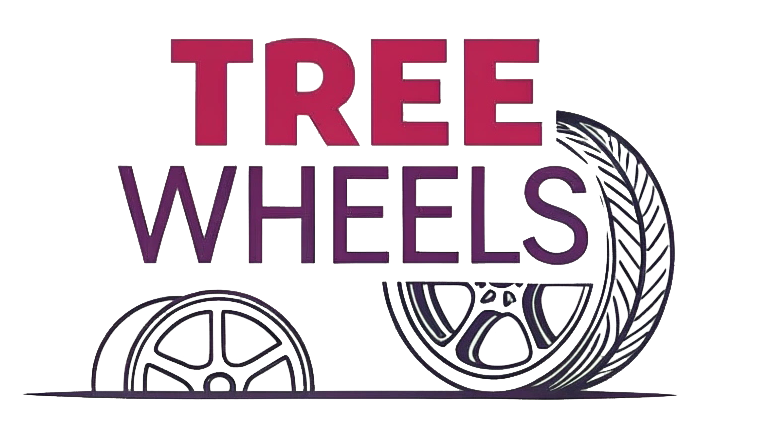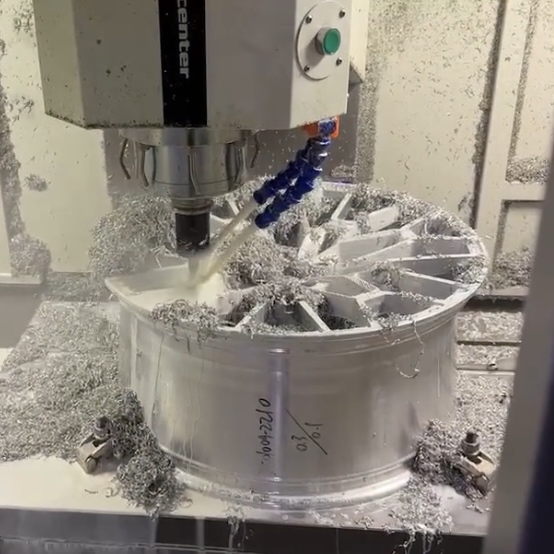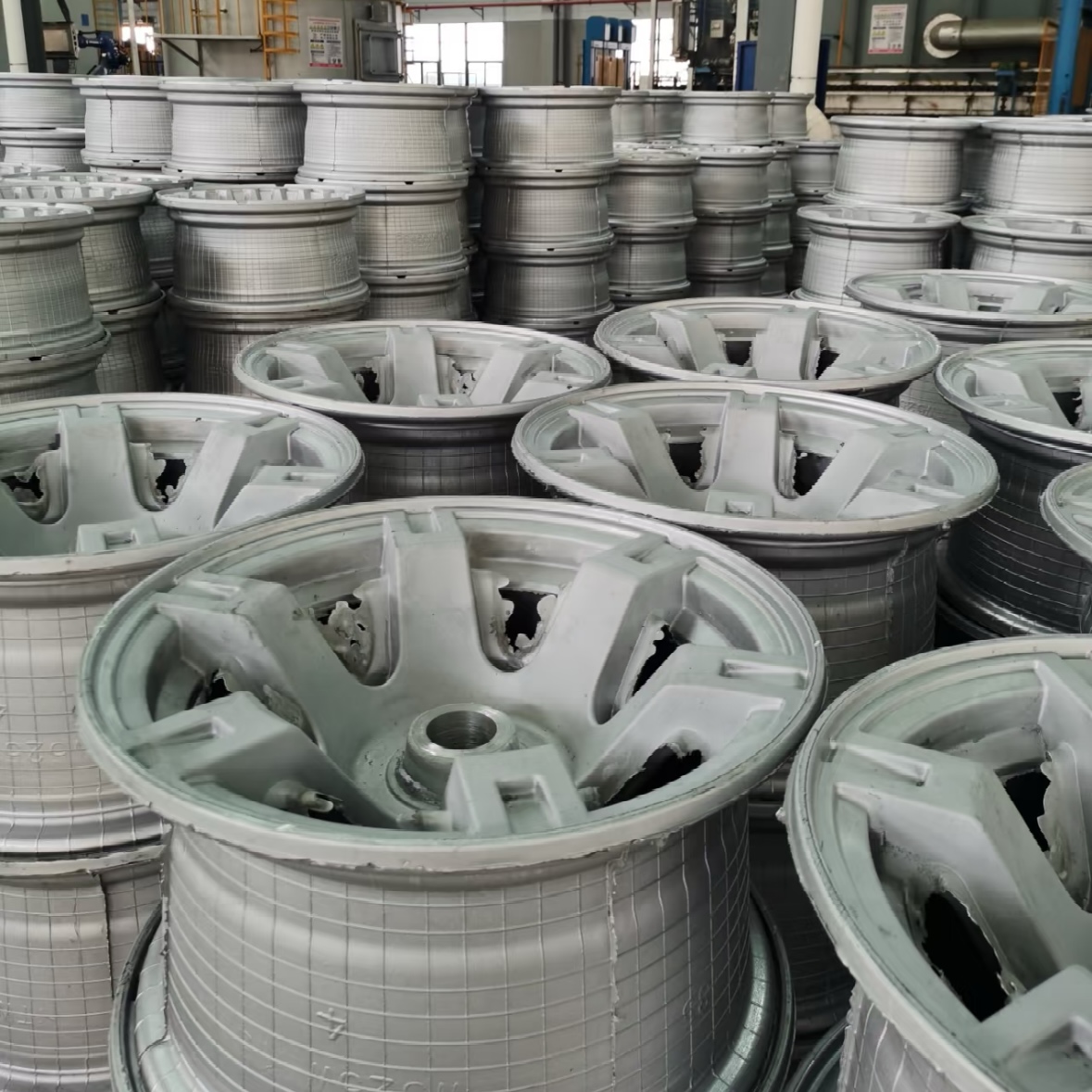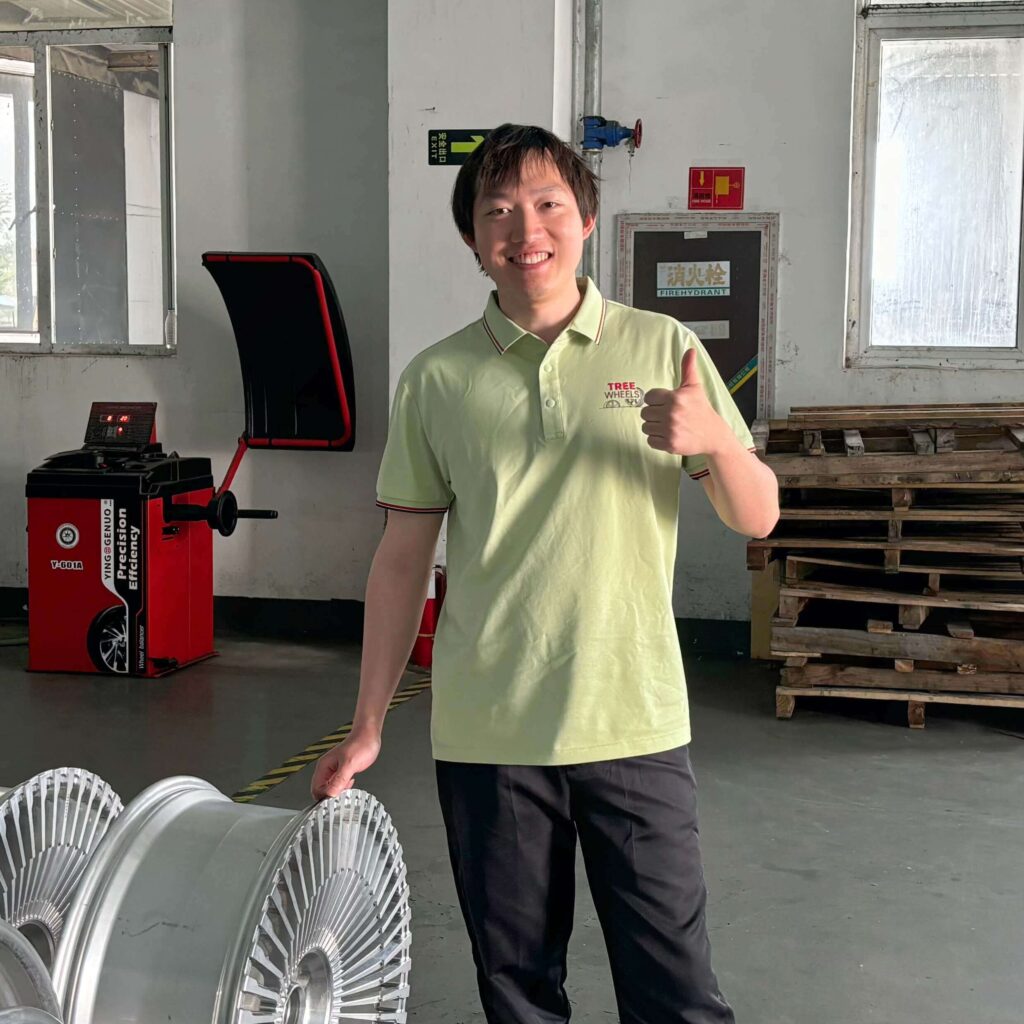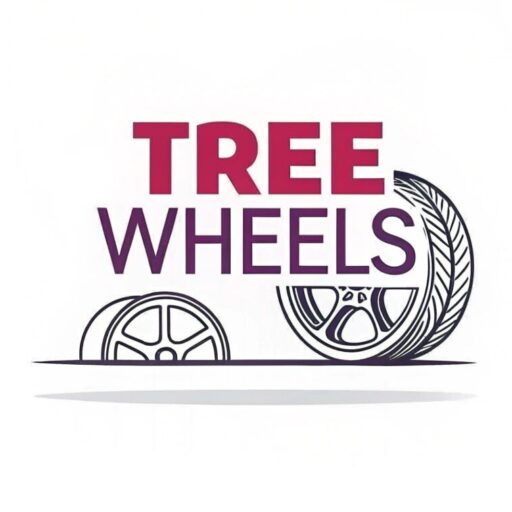Car enthusiasts face a constant problem: achieving that perfect aggressive stance. Standard wheels often fall flat, lacking the visual impact and dimensional presence that transforms a vehicle from ordinary to extraordinary.
Deep concave wheels create a three-dimensional visual effect that flat wheels cannot match. Their inward-curving spokes add depth, aggression, and a custom appearance to vehicles. While popular on sports and luxury cars, proper fitment requires careful consideration of vehicle specs and potential modifications.
 on a performance vehicle [deep concave wheels](https://www.velgenwheels.com/blogs/blog/deep-dish-vs-concave-wheels?srsltid=AfmBOorkaPkDBnGHJO5hU0Dl6D5Fk0sU6utzDpusO5HfAFkG-xdihSOM) on sports car](https://treewheels.com/wp-content/uploads/2025/08/image-1-a-high-quality-3d-render-of-deep-concave-w.png)
When I first started designing custom wheels at Tree Wheels, I quickly realized that wheel concavity isn't just a specification—it's a passion point for enthusiasts. The difference between a flat wheel and a deep concave design completely transforms a car's personality. What was once a two-dimensional surface becomes a dynamic, three-dimensional statement that draws the eye and creates powerful visual tension. Let's explore why these wheels have become so desirable and what you need to know before choosing them for your vehicle.
Can Any Vehicle Successfully Pull Off Deep Concave Wheels?
Many car owners face disappointment when attempting to fit deep concave wheels on incompatible vehicles. Without proper clearance for brake components, suspension geometry, and fender limits, even the most beautiful wheels become unusable.
Not all vehicles can accommodate deep concave wheels without modifications. Factors including brake caliper size, suspension design, wheel well dimensions, and overall vehicle architecture determine compatibility. Sports cars and performance vehicles typically offer better fitment opportunities than SUVs or compact cars.
 diagram illustrating clearance requirements wheel [fitment](https://wheelsdoctor.com/what-is-a-wheel-fitment/) diagram showing clearance issues](https://treewheels.com/wp-content/uploads/2025/08/image-2-technical-illustration-in-infographic-styl.png)
I've encountered numerous situations where customers have their hearts set on an extremely concave profile that simply won't work with their vehicle's specifications. One particular case involved a client with a 2010 Porsche Cayenne who wanted wheels with the same aggressive concavity as those on the 2014 model. While we could certainly manufacture wheels with identical concavity, the older Cayenne's wheel well architecture and brake components couldn't accommodate such a deep profile without the wheels protruding awkwardly beyond the fenders—creating both safety and aesthetic issues.
This highlights a crucial consideration: vehicle compatibility must guide wheel selection, not just aesthetic preference. Modern performance vehicles generally offer more flexibility for deep concave fitments thanks to their suspension design and brake placement. However, many sedans, SUVs, and older vehicles have limitations that restrict just how concave their wheels can be before encountering clearance problems.
| Vehicle Type | Typical Concavity Compatibility | Common Limiting Factors |
|---|---|---|
| Sports Cars | High - Very High | Few limitations; designed for aggressive wheels |
| Performance Sedans | Medium - High | Brake caliper size, fender design |
| Luxury Sedans | Low - Medium | Comfort-oriented suspension, brake design |
| Modern SUVs | Low - Medium | Weight requirements, brake components |
| Older Vehicles | Very Low - Low | Original design limitations, smaller wheel wells |
| Modified Vehicles | Medium - Very High | Depends on modifications made |
Professional wheel specialists can help determine the maximum concavity possible for specific vehicles, sometimes recommending staggered setups (deeper concavity on rear wheels) when front wheels face clearance restrictions from steering components or brake systems.
What are the benefits of deep dish rims?
Standard wheels often leave performance enthusiasts wanting more. They lack presence, fail to fill wheel wells properly, and don't create the visual impact that defines a truly customized vehicle.
Deep dish rims offer enhanced visual impact with their three-dimensional profile, improved directional stability through increased track width, better brake cooling via increased airflow, and the ability to accommodate wider tires for improved grip. They also provide greater customization options through different lip sizes.
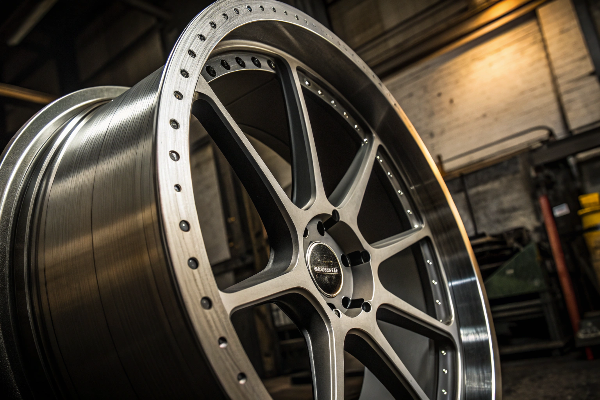
The misconception I often encounter is that deep dish designs are purely aesthetic choices, but there's much more to consider. Beyond their unmistakable visual appeal, these wheels deliver tangible performance advantages worth exploring.
| Benefit | Description | Impact |
|---|---|---|
| Visual Impact | Three-dimensional depth and presence | Dramatic transformation of vehicle appearance |
| Improved Stability | Wider effective track width | Enhanced cornering performance, reduced body roll |
| Enhanced Brake Cooling | Better airflow around brake components | Reduced brake fade during performance driving |
| Tire Options | Can accommodate wider tires | Increased contact patch and potential grip |
| Customization Versatility | Multiple finish options between face and lip | Greater personalization possibilities |
| Stance Enhancement | Fills wheel wells more effectively | More aggressive, purposeful appearance |
From a customization perspective, deep dish wheels offer unparalleled flexibility. The relationship between the wheel face, step, and outer lip can be precisely tailored to complement specific vehicle designs. For luxury sedans, a moderate dish with elegant spoke patterns creates sophisticated depth. On muscle cars, an aggressive deep dish with a substantial lip emphasizes power and presence. Many enthusiasts specifically seek out deep dish designs for their ability to showcase custom finishes—contrasting colors between faces and lips, intricate machined details, or distinctive brushed textures that would be less impactful on flat wheel faces.
What does deep concave wheel mean?
Regular wheels have flat or minimally curved faces that don't create dimensional interest. Their plain profiles fail to generate visual drama or complement aggressive vehicle styling.
Deep concave wheels feature faces that curve inward from the outer lip toward the center, creating a three-dimensional, bowl-like appearance. This inward curvature varies in depth depending on design and application, ranging from subtle concavity to extreme profiles where spokes appear to recede deeply into the wheel center.
 profiles concave wheel profile diagram](https://treewheels.com/wp-content/uploads/2025/08/image-4-a-clean-technical-diagram-showing-a-side-p.png)
When I discuss wheel designs with clients, I often explain concavity as the transition from 2D to 3D aesthetics. Traditional flat-faced wheels present essentially as two-dimensional objects—functional but visually static. Deep concave designs, however, introduce a dynamic third dimension that creates visual movement even when the vehicle is stationary.
| Concavity Level | Typical Depth | Visual Effect | Common Applications |
|---|---|---|---|
| Flat/No Concave | 0-5mm | Two-dimensional, conservative | Luxury cars, business sedans, OEM wheels |
| Mild Concave | 10-20mm | Subtle dimension, refined depth | Entry luxury, sport sedans, subtle upgrades |
| Medium Concave | 20-40mm | Noticeable dimension, sporty character | Sports coupes, performance sedans, aftermarket |
| Deep Concave | 40-60mm | Dramatic depth, aggressive stance | Sports cars, modified vehicles, show cars |
| Super Concave | 60mm+ | Extreme dimensional effect | Custom builds, show vehicles, modified sports cars |
The technical definition involves measuring the depth from an imaginary flat plane across the outer edge to the deepest point of the spoke face. This concavity is achieved through sophisticated forging and machining processes that carefully balance material distribution. At Tree Wheels, our manufacturing approach uses precision CNC machining on forged wheel blanks to create exact concavity profiles tailored to specific vehicles. We've developed different concavity styles ranging from linear (where the curve is consistent from lip to center) to progressive designs (where the curve accelerates as it approaches the center). This variation allows us to match the wheel's visual character to the vehicle's personality—whether that's subtle sophistication for luxury applications or dramatic aggression for performance builds.
Are concave wheels better?
Traditional flat-faced wheels fail to distinguish a vehicle in today's customization-focused automotive culture. They lack visual depth and dimension, preventing enthusiasts from achieving their desired aesthetic impact.
Concave wheels aren't universally "better" but offer distinct advantages including enhanced visual appeal, increased strength-to-weight ratio, improved brake cooling, and greater customization options. Their performance benefits depend on proper sizing, quality of construction, and appropriate application for specific vehicles.

The question of whether concave wheels are objectively "better" requires nuanced consideration. From my experience working with high-end automotive builds, the answer depends entirely on application, vehicle type, and the owner's performance and aesthetic goals.
| Consideration | Concave Wheels | Flat Face Wheels |
|---|---|---|
| Visual Impact | High dimensional presence, aggressive stance | Conservative appearance, subtle integration |
| Weight Distribution | Can optimize material placement for strength-to-weight | Often require more material for equal strength |
| Brake Clearance | May offer improved space for large brake systems | Can be limited with certain brake setups |
| Vehicle Compatibility | Best suited for sports/performance vehicles | Universal application across vehicle types |
| Customization Options | Greater variety in depth and dimensional effects | Limited dimensional possibilities |
| Brand Expression | Makes stronger visual statement | Subtle, understated appearance |
| Cost Implications | Often more expensive due to complex manufacturing | Generally more affordable to produce |
However, context matters tremendously. Business-oriented luxury vehicles often benefit more from flat or minimally concave designs that project stability and understated elegance. The visual dynamism of deep concave wheels might contradict the intended character of such vehicles. Additionally, extremely deep concave designs may require compromises in other areas—potential reduction in brake clearance, changes to effective offset, or limitations in load rating that might affect practicality. Quality of construction also plays a crucial role; poorly engineered concave wheels might sacrifice structural integrity for appearance. At Tree Wheels, we address this by using advanced finite element analysis during design to ensure our concave profiles maintain optimal strength characteristics. The "better" wheel ultimately depends on alignment with specific vehicle requirements, driving conditions, and personal preference rather than concavity alone.
Conclusion
Deep concave wheels transform vehicles with their dramatic three-dimensional presence, delivering both visual impact and potential performance benefits when properly matched to compatible vehicles. Remember that achieving the perfect concave fitment requires expert guidance and precise specifications.
Tree Wheels crafts custom forged wheels with optimal concavity profiles tailored specifically to your vehicle's requirements and your personal aesthetic vision.
